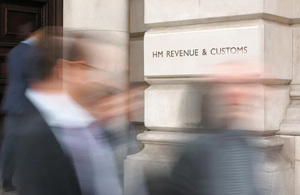Government strengthens safeguards for direct action to recover debts
Plans to recover tax and tax credit debts directly from the bank accounts of people and businesses who refuse to pay what they owe will include strong safeguards to protect vulnerable taxpayers, the government announced today.

Direct Recovery of Debts (DRD) will give HM Revenue and Customs (HMRC) the ability to recover cash directly from the bank accounts, building society accounts and ISA accounts of a small number of debtors who owe £1,000 or more. It is expected to bring in around £100 million a year.
A consultation on the plans published in May included a significant number of guarantees to provide certainty to taxpayers, such as only applying the powers to established debts and only targeting debtors who have repeatedly ignored attempts to make contact.
Following constructive comments from key stakeholders, such as professional and representative bodies, the government has today further strengthened the safeguards which will apply to the limited use of DRD. These include:
- Guaranteed visits to debtors from an HMRC officer to meet them face-to-face. This will ensure that everyone subject to DRD will have had a chance to challenge and settle their affairs – whether by paying in full or setting up a payment plan – and that DRD will only apply to those who have chosen not to do so. The visit will also allow HMRC to identify vulnerable members of society to provide them with appropriate support.
- Establishing a new, specialist unit to deal with cases involving vulnerable members of society, as well as providing a dedicated DRD team and helpline.
- Ensuring that judicial oversight of the process is enshrined in legislation, by allowing for appeal to the County Court.
- Putting a hold on debtors’ accounts and giving them 30 days – more than twice as long as previously planned – to contact HMRC and arrange payment of the debt or object to the use of DRD, before any money is taken.
- Further new safeguards relating to transparency, governance and a phased implementation of the DRD powers.
These are all in addition to existing guarantees, such as only taking action against those with over £1,000 of tax or tax credits debt, to always leave a minimum of £5,000 across debtors’ accounts, and to only put a hold on the funds in the affected account up to the value of the debt.
Financial Secretary to the Treasury David Gauke said:
This is about levelling the playing field. The vast majority of people pay the tax that is due, on time, but there is still a very small minority who try to gain an unfair advantage by persistently refusing to pay what they owe, despite being able to. These are the people who will be targeted by the powers for the direct recovery of debts owed to the Exchequer.
We already set out robust safeguards to protect vulnerable debtors in our original Direct Recovery of Debts proposals, but feedback from the consultation process told us we could do more to make sure this only catches those who are playing the system.
We’re strengthening the guarantees we can offer taxpayers that the powers will only be used when debtors have consistently refused to talk to HMRC and settle their debts, and their use will be subject to the toughest scrutiny and oversight possible.
We’re far from the first country to take this step – many other tax authorities already use similar powers routinely and responsibly as a crucial lever for ensuring their government is paid what is owed.
HMRC will continue to work proactively with key stakeholders, such as professional groups and those representing vulnerable customers, on the detail of the DRD process. The government is grateful for the helpful input from everyone who responded to the consultation, which has allowed it to strengthen the safeguards.
HMRC estimates DRD will apply to around 17,000 cases a year, with the average debt of those affected £5,800. Around half of these cases will involve debtors with more than £20,000 in their bank and building society accounts.